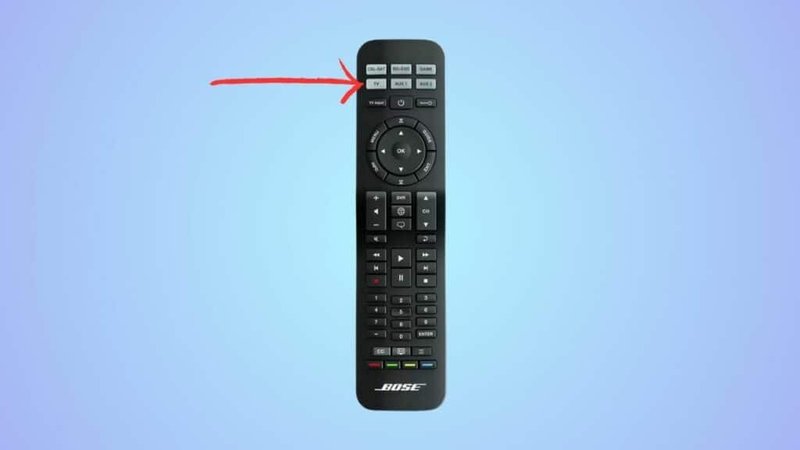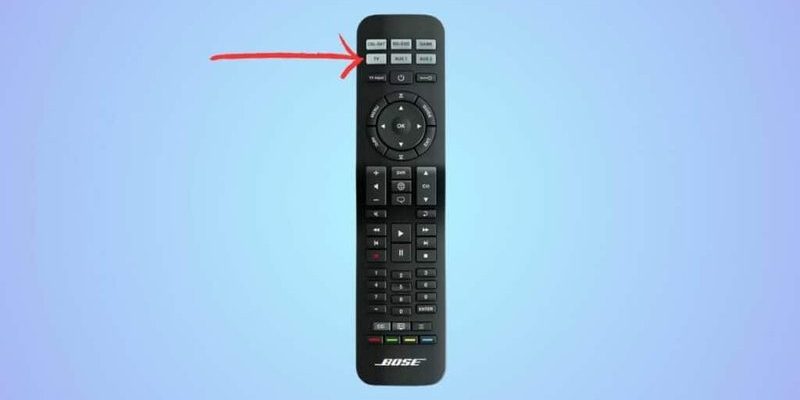
Here’s the thing: TCL is everywhere right now. Their TVs offer a ton of bang for your buck, and their remotes—whether original or universal—are usually pretty user-friendly. But even so, getting your remote to sync or pair with your television (or other devices) can trip up just about anyone new to the game. If it feels confusing, you’re absolutely not alone. A lot of us have been there, staring at the blinking red light, wondering if we broke something—but trust me, you haven’t.
This guide’s going to break down the whole process with real-world examples and some of the best tricks I’ve learned after too many “why isn’t this working?” moments. Whether your TCL remote is fresh from the box, a replacement, or you’re trying to juggle a universal remote for multiple devices, I’ll walk you through how to get your setup running smoothly, step by step.
Understanding TCL TV Remotes: What Are You Really Dealing With?
Let me explain: not all remotes are created equal. TCL TV remotes come in a few flavors—most are either standard IR (infrared) models or more advanced Bluetooth/Wi-Fi versions, especially if you have a Roku-powered TCL TV. Universal remotes are another beast, trying to be the “one remote to rule them all.”
Standard TCL remotes work by blasting an invisible infrared signal from the remote to your TV. You have to point directly at the little receiver on the front of your television, and any obstructions (even a cat’s tail) can block the signal. These are the “old school” kind most of us remember from childhood.
Bluetooh or Wi-Fi TCL remotes are usually paired during the TV’s setup. These don’t require precise aiming—the signal can travel through walls—making them a lifesaver if your living room looks like a pillow fort. They also tend to support voice control and have extra features.
Universal remotes can control just about anything—TV, soundbar, even your grandma’s ancient DVD player—if you’ve got the right code. The catch? They require you to program in the correct TCL TV code, which can feel like solving a secret puzzle.
Understanding what type of remote you have is step one. If you’re unsure, check the battery cover or model number. It really matters, because each one gets programmed a little differently.
First Things First: Fresh Batteries Make All the Difference
Okay, I know this sounds basic, but you’d be shocked at how many remote “problems” boil down to tired batteries. Picture this: you’ve followed every instruction perfectly, but nothing happens. Before you scream into a pillow, flip over your remote and pop in a fresh set of alkaline batteries.
Pro tip: Weak batteries can cause the remote to send incomplete or weak signals, making programming or pairing impossible. Always start with a fully juiced remote—trust me, it saves headaches.
When you insert new batteries, make sure they’re positioned the right way (those tiny +/- symbols exist for a reason). Close the battery cover tight; a loose connection can stop the remote from working. Once that’s done, give the power button a quick press. If you see a bright little LED flash, you’re good to go.
This is also a smart time to do a quick test—try turning your TV on and off. If it works, congrats! If not, it’s time to start programming or pairing your TCL TV remote.
The Fast Track: Programming an Original TCL TV Remote
Got the original remote that came with your TCL television? Programming it can actually be super simple. Here’s how I’d explain it to a friend:
- Make sure your TV and remote have power (seriously, double-check those batteries!).
- Most TCL TV remotes automatically sync with the TV when you first power them up. If not, look for a button on the remote labeled “Pairing” or “Setup.” Sometimes it’s hidden inside the battery slot—manufacturers love to keep us on our toes.
- Press and hold the pairing button until the LED starts blinking (about 3–5 seconds). That blinking means the remote is searching for the TV, like a puppy sniffing out treats.
- Once the LED stops blinking, try basic commands: volume up, channel change, or power. If your TV responds, you nailed it.
Sometimes your TCL TV will guide you with on-screen instructions during setup—don’t ignore those. They’re actually helpful (for once). And if you get stuck, a quick reset by removing the batteries for 30 seconds can work wonders—basically a remote “nap.”
Universal Remotes: Cracking the Code (Literally)
Programming a universal remote with your TCL TV isn’t rocket science, but it does involve a little detective work. Universal remotes use “codes” to mimic your original remote’s signals. If you find the right code, it’s like you’ve found the secret handshake for your TV.
- First, grab the code list that came with your universal remote. Lost the paper? No worries—most brands have their code lists online. Search for “TCL TV remote codes” and your remote’s brand.
- Put your remote in programming mode. This is usually done by holding down the “Setup” button until an LED light stays on (not just blinks).
- Punch in the TCL TV code using your remote’s number buttons. The light should blink (sometimes twice) to confirm the code is accepted.
- Test the remote: try the basic buttons. If your TV responds, you did it. If not, try the next code on the list.
Honestly, it’s a bit of trial and error. It took me three codes once before my friend’s TV finally woke up. If it feels like nothing’s working, double-check that you’ve got the right TCL code—or try the “auto code search” feature if your remote has it. Some fancier universal remotes can scan through possible codes for you, which is a lifesaver if you’re not a fan of guesswork.
Troubleshooting: When Your TCL Remote Won’t Pair, Sync, or Respond
Let’s be real—sometimes, despite your best efforts, the remote just refuses to cooperate. Here are a few common culprits, and what you can do:
- Obstructions in the Line of Sight: If you’re using an IR remote, make sure nothing’s blocking the TV’s sensor. Even a glass of water in front of the screen can mess things up. Clear the view and try again.
- Interference: Wireless remotes (Bluetooth or Wi-Fi) can struggle if you’ve got lots of competing signals—like dozens of Wi-Fi gadgets or other remotes. Try pairing in a different room or moving nearby devices.
- Code Confusion: With universal remotes, the wrong code means zero control. Make sure you’re using an up-to-date list, and double-check the model numbers.
- Firmware or Software Glitches: Sometimes your TV just needs a quick reboot. Unplug it from power for 30 seconds, then plug it back in. This can “unstick” a remote-pairing process.
If all fails: You can always do a full reset by taking the batteries out of your remote and holding down the power button for 15 seconds. Pop the batteries back in, and try again. It sounds old school, but it genuinely works more often than you’d think.
And if you’re really stuck, TCL’s customer support is actually pretty responsive. Sometimes just explaining your specific problem to a real person (or using their online chat) saves hours of frustration.
How Codes Work: The Secret Language of Remotes
Ever wondered what’s actually happening when you enter a code into your remote? It’s like teaching your remote a new language—the code tells the remote how to “speak” to your TCL TV.
A universal remote usually contains a huge library of commands, but it doesn’t know which language to use until you tell it. Entering the TCL TV code “unlocks” the remote’s ability to communicate with your specific model.
- Older remotes rely on fixed codes—each brand and device model gets a unique set of commands.
- Newer universal remotes may support “learning mode”—they capture commands directly from your original TCL remote’s signal. This is great if your TV or remote is a little unusual, or you lost the code list.
Insight: Codes aren’t just for TVs. You can program your universal remote to talk to soundbars, DVD players, or even that ancient VCR still lurking in the closet.
Feeling like a secret agent yet? It’s pretty cool when you realize what’s happening behind the scenes—your remote is literally syncing with your devices using these secret codes.
Resetting Your TCL Remote: When a Fresh Start is Needed
Sometimes your remote has just… had a rough day. Maybe you’ve tried syncing, pairing, entering codes, and nothing seems right. That’s usually a sign that a reset is in order.
Here’s how to give your TCL remote a reset:
- Take out the batteries.
- Press and hold the power button (or any other button) for 10–15 seconds. This drains any lingering charge and clears out old commands.
- Pop the batteries back in—ideally brand new ones—and try programming again.
Some TCL remotes have a dedicated reset button inside the battery compartment. Use a paperclip to press it gently for a few seconds. The remote will forget all its previous pairings, so it’s like a blank slate. Just be prepared to follow the programming steps one more time—you know the drill by now!
Universal vs. TCL Original: Which Remote is Best for You?
Honestly, it depends on what you want out of your TV experience. TCL’s original remotes are pretty foolproof—they’re designed to work right out of the box with minimal setup. If you’re just controlling your TCL TV and maybe a streaming stick, sticking with the original is usually easiest.
Universal remotes are awesome if your home setup is more complicated. Maybe you’ve got a soundbar, Blu-ray player, and cable box all jockeying for attention. With the right code, one universal remote can rule them all. But they do require more effort to program, and sometimes not every feature from the original remote is available (like TCL’s voice commands or certain app buttons).
Quick story: I once switched to a universal remote for my parents because they had three different remotes for TV, Roku, and the sound system. One afternoon, I sat on the floor for an hour entering codes and testing buttons. When everything finally worked, my parents called it “TV magic.” The best part? No more frantic “where’s the other remote?” moments.
So, think through what you really need. If you only care about power, volume, and channels, a universal remote is perfect. But if you want all the smart features, go with TCL’s own.
Keeping It Simple: Final Tips for Remote Programming Success
After fiddling with remotes for more hours than I’d like to admit, here’s what I always tell friends and family:
- Start slow. Rushing through setup is a recipe for frustration—go step by step, and double-check instructions.
- Keep those code lists handy, or bookmark TCL’s official website and your remote’s brand for quick troubleshooting help.
- If you hit a wall, don’t be afraid to reset and try again. Even the pros do it.
- And try not to toss your remote across the room in frustration—unless you’re planning to buy a new one!
Remember, programming a TCL TV remote isn’t some impossible mystery. With the right approach—and maybe a bit of patience—you’ll have your TV, remote, and all your gadgets working together like a well-rehearsed band. So grab your remote, take a deep breath, and get started. If you mess up, just reset and try again. Chances are, you’ll be flipping channels from your couch in no time.
